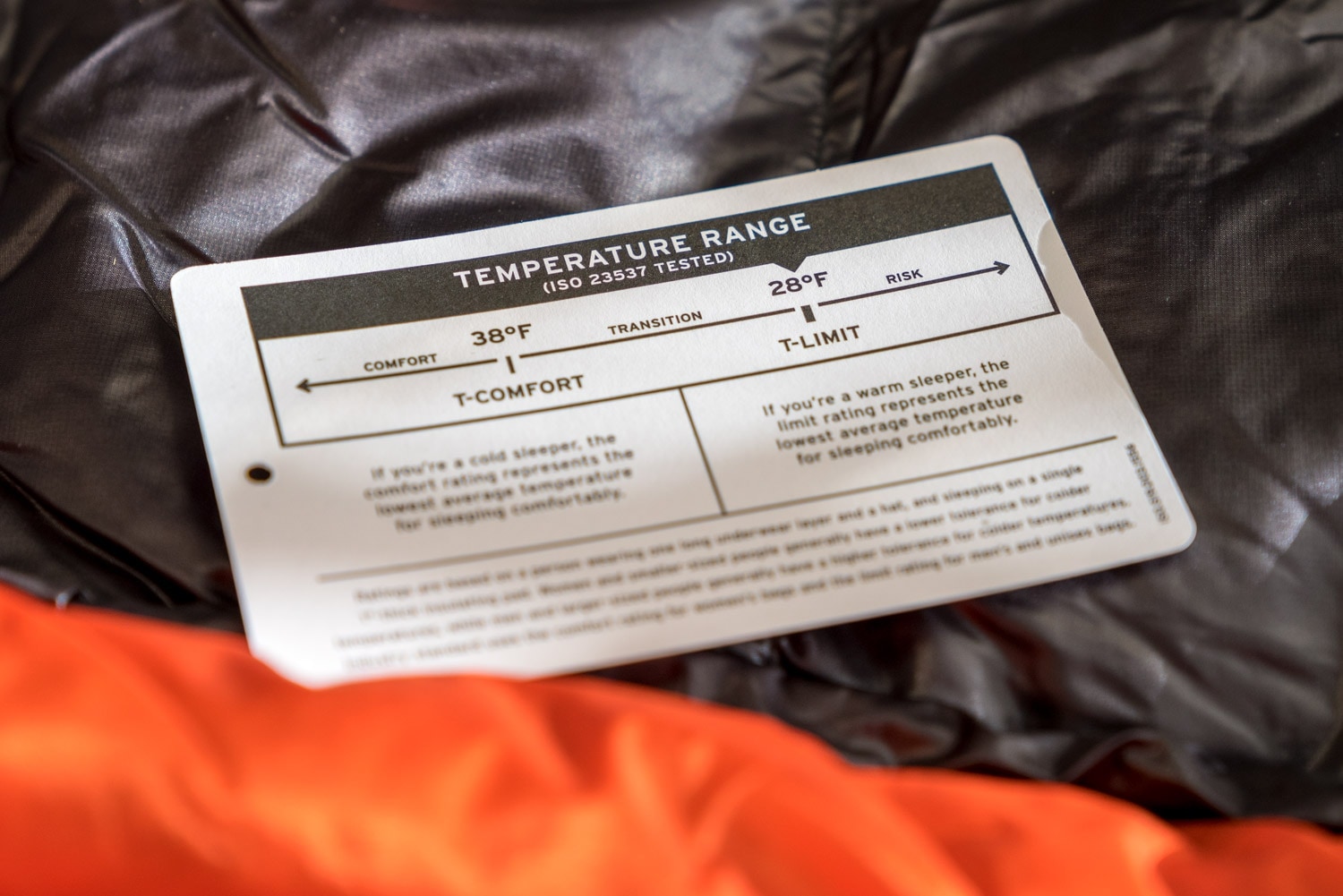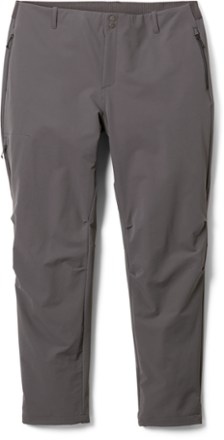Because waking up in your tent shivering in the middle of the night is a miserable experience, the key factor when you choose a sleeping bag is its temperature rating. If you have a reasonable idea of the coldest conditions you anticipate on your adventure, you can pick a bag that will keep you warm at or below that temperature.
Sleeping bag temperature ratings, however, are a somewhat complicated subject. To understand them better, it helps to understand how the bags are tested for warmth in the lab (including some of the limitations in the process), and the meaning of some not-so-intuitive terms you'll see in bag temperature ratings.
Here are important things to understand when using temperature ratings to shop for a sleeping bag:
- Lab-tested temperature ratings (as indicated by "EN" or "ISO" ratings) are useful for making an apples-to-apples comparison between sleeping bags from different brands.
- Real-world comfort probably won't match lab-tested temperature ratings because of all the variables that a lab can't simulate.
How Sleeping Bags are Tested
In the old days, brands tested sleeping bags in their own labs using a variety of methods, so there was no way to know if one company's 30-degree bag was truly just as warm as another's 30-degree bag.
The bag industry solved this problem by agreeing to test bags the same way for all brands. Today most brands send their sleeping bags to an independent test lab that assigns bag temperature ratings.
EN (European Norm), was the original standard adopted by the sleeping bag industry. Today, a new entity, the ISO (International Standards Organization), oversees bag testing, but the method is almost identical to the EN bag test. (Because ISO testing is so similar to EN testing, you can compare your old EN-rated bag to a newer bag that sports an ISO temperature rating when you shop.)
Standardized laboratory tests produce a rating range for each sleeping bag, with two temperature ratings within that range specifically called out:
- Comfort rating indicates the temperature at which a cold sleeper might feel comfortable. This is the temperature rating brands use on women's bags.
- Lower limit rating (which is always lower than the comfort rating) indicates the temperature at which a warm sleeper might still feel comfortable. This is the temperature rating brands use on men's bags.

Fun Facts About Sleeping Bag Temperature Ratings
Temperature ratings are estimates, not gospel: Lab testing simulates how a sleeping bag should be used: A sleeping pad is placed under the bag, and a test dummy inside the bag is dressed in base layers. While this protocol ensures that all bag tests are done the same way, it can't account for variations like differences in people's clothing and gear (i.e. sleeping pads), differences in body types (warm and cold sleepers), changing weather conditions, differences in food people eat and more. So, when you use your sleeping bag in the outdoors, its comfort level will probably differ from its tested temperature rating.
Numbers on bag names don't match exact temperature ratings: The Men's "Snugglebuggle" 15 Bag, for example, might actually have an ISO lower limit rating of 18 degrees Fahrenheit. For simplicity, in the bag's name, a brand will round up or down to a number that ends in a 0 or a 5, and there are no rules about whether they round up or round down. So always look at the actual test rating on a bag, not merely the number in its name.
Why women's sleeping bags use the comfort rating: Data on physiological differences between traditional genders has always shown that the "average woman" will feel colder in the same bag than the "average man" will feel. So, the comfort rating, which is the temperature for colder sleepers, was the logical spec target for women's bags, and brands continue to use the comfort rating on women's bags today.
At a given temperature, most women's bags weigh more than men's bags. This is the result of using the comfort rating test result for women's bags. It takes more insulation to ensure one bag's comfort rating matches another bag's lower limit rating. If you tend to be warm when you sleep, you can avoid unwanted ounces by looking at the lower limit ratings when selecting a bag.
Not every sleeping bag has an ISO (or EN) rating: The test standard isn't valid for bags designed for extreme cold, nor does it apply to kids' bags. And brands might not choose to get ISO testing on bags intended for mild conditions or casual use. Whenever you see a "temperature rating" spec that's not stated as either "comfort" or "lower limit," that bag spec probably reflects the brand's estimate, not an ISO or EN test. Use that spec as a rough guideline, not a rating you can absolutely compare to similar bags from other brands.
Going Beyond Temperature Ratings When You Shop
There's more to a sleeping bag than simply its temperature rating. To learn the rest of the story, read How to Choose Sleeping Bags for Backpacking or How to Choose Sleeping Bags for Camping. When you're ready to shop, REI.com offers a big selection of both backpacking sleeping bags and camping sleeping bags.




